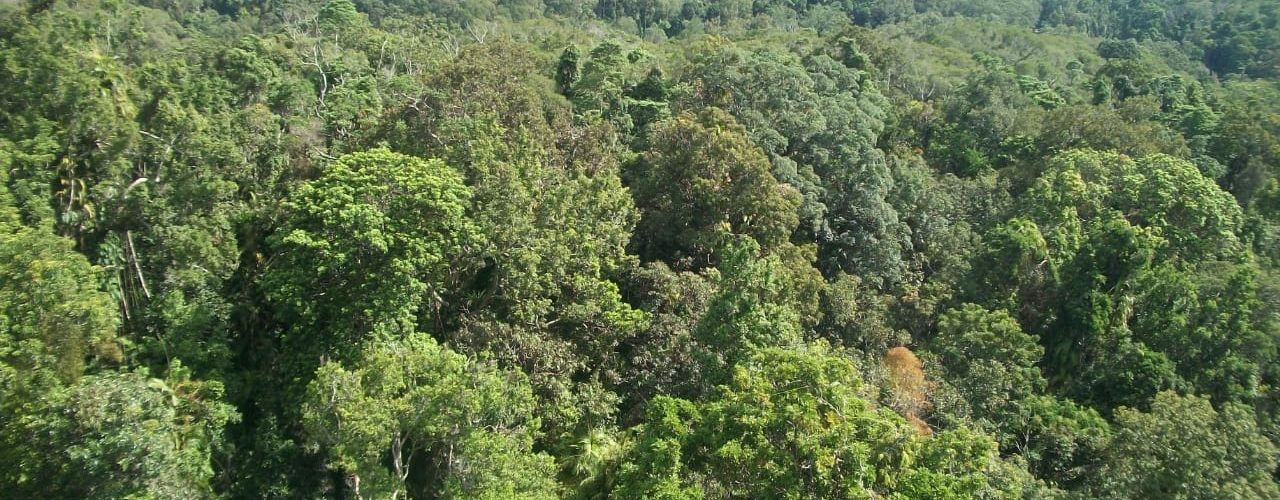Under the Paris Agreement, India has submitted its updated Nationally Determined Contribution (NDC) to the United Nations Framework Convention on Climate Change (UNFCCC) with one of the quantified targets on the creation of an additional carbon sink of 2.5 to 3 billion tonnes of CO2 equivalent through additional forest and tree cover by 2030.
As per India’s third National Communication submitted to UNFCCC in 2023, an additional carbon sink of 1.97 billion tonnes of CO2 equivalent has been created from 2005 to 2019.
This has been achieved through several initiatives launched and implemented by the Ministry of Environment, Forest and Climate Change (MoEF&CC).
Let us explore some of these schemes introduced in India to expand tree and forest cover as well as the ones taken for the conservation of mangroves and wetlands in the country.
National Mission for a Green India (GIM) is one of the missions outlined under the National Action Plan on Climate Change (NAPCC). It aims to protect, restore, and enhance India’s forest cover and respond to Climate Change by undertaking plantation activities in the forest and non-forest areas in the selected landscapes.

The Nagar Van Yojana (NVY) scheme is intended to create forest and green spaces in urban and peri-urban areas. This scheme is implemented through the Forest Departments of respective State and Union Territories and Urban Local Bodies.
The School Nursery Yojana (SNY) scheme is intended to create awareness and motivate students to understand and appreciate the significance of plants. This is being implemented in recognized public and private schools.
The “Mangrove Initiative for Shoreline Habitats & Tangible Incomes” (MISHTI) scheme has been launched to restore and promote mangroves as unique and natural ecosystems. MISHTI emphasises the need to preserve and enhance the sustainability of coastal habitats.
The program envisages covering approximately 540 sq. km area across nine coastal States and four Union Territories, promoting carbon sequestration and climate resilience.
The Ek Ped Maa Ke Naam campaign (Plant for Mother) was launched on World Environment Day (5 June) 2024 to promote pro-planet activities by citizens.
This campaign draws a parallel between the nurturing of nature by Mother Earth and the nurturing of human lives by our mothers. It aims to underline this relationship by planting a tree as a mark of love, respect, and honour for our mothers and by pledging to protect trees and Mother Earth.
Through Plant for Mother campaign, halting and reversing land degradation, building drought resilience, preventing desertification and increasing the green cover of the country through voluntary planting of trees by all the citizens is envisaged.
More than 1 billion seedlings have been planted under the Plant for Mother campaign with participation of the Government agencies, village-level institutions, public representatives, educational institutions, youth, students and other stakeholders. The campaign not only aims at planting trees but sensitizes people about the need to protect and nurture them.
The planting of indigenous species not only helps improve the survival of trees but also builds a resilient ecosystem in the plantation areas. The maintenance of planted seedlings is encouraged through public participation and volunteerism/internship.
Further, the National Forest Policy 1988 aims to substantially increase the tree and forest cover through massive afforestation programmes, especially on denuded and degraded lands.
India recently updated and released the National Biodiversity Strategy and Action Plan (NBSAP). The NBSAP acknowledges environmental challenges and outlines strategies to focus on the restoration of degraded ecosystems, the protection of wetlands, and the sustainable management of marine and coastal areas.
India has committed to restoring 26 million hectares of degraded land by 2030 as part of its obligations under the Bonn Challenge and the United Nations Convention to Combat Desertification (UNCCD).
Ministry is implementing a centrally sponsored scheme namely, the National Plan for Conservation of Aquatic Ecosystems (NPCA) for the conservation and management of wetlands in the country, on a sharing basis between the Central Government and respective State Governments
In addition to the above, funds under the Compensatory Afforestation Fund Management and Planning Authority (CAMPA) are utilized for compensating the loss of forest and ecosystem services due to the diversion of forest land for non-forestry purposes as per the provision of the Van (Sanrakshan Evam Samvardhan) Adhiniyam, 1980.
The implementation of various afforestation and forest restoration activities aimed towards the creation of additional forest and tree cover is taken up by involving local communities and through the participation of Joint Forest Management Committees established at village levels.
Afforestation targets are fixed annually under the Twenty Point Program by MoEF&CC for States and Union Territories. These targets are achieved collectively by the States and Union Territories through various programmes of the Central Government Schemes, State Government plan and non-plan schemes and plantation efforts by NGOs, Private organizations, Civil Societies etc.
The Ministry also, on various occasions like International Day of Forests, World Environment Day, Van Mahotsav, Wildlife Week, etc., promotes mass tree plantation and disseminates knowledge about tree plantation and conservation of forests among the public through various conferences, workshops, brochures, sign boards etc.
Apart from the emphasis on increasing the tree and forest cover in the country, the MoEF&CC has formulated a National Action Plan on Forest Fire-2018, which provides comprehensive measures to prevent forest fires, to improve the resilience of the forests against fire hazards, besides prescribing measures such as capacity building of communities in prevention and control of forest fire.
Wrapping Up
These action plans have resulted in significant progress in expanding forest and tree cover.
Forest Survey of India (FSI), Dehradun, an organization under the Ministry assesses forest cover in India biennially. As per the last India State of Forest Report (ISFR) 2021, the total forest cover of the country is 7,13,789 square kilometres which is 21.71% of the geographical area of the country.
India’s total tree and forest cover has increased from 21.23 per cent in 2013 to 21.71 per cent in 2021 and in terms of size, it has increased by 7449 square kilometres as per the assessment in ISFR 2021 in comparison to the assessment in ISFR 2017.
As per the FAO’s Global Forest Resource Assessment 2020, India with 72.16 lakh Ha of forest cover is among the top ten countries worldwide.
India’s efforts towards protecting and expanding forest cover are critical to addressing environmental challenges and providing climate stability, biodiversity conservation, economic development, and human well-being.
The increase in tree and forest cover in India is also important for expanding its carbon sink. As per India’s third National Communication submitted to UNFCCC in 2023, an additional carbon sink of 1.97 billion tonnes of CO2 equivalent has been created from 2005 to 2019.
You might also like to read –
What is the importance of forests? Read here
What is the importance of mangroves? Read here
Laws that protect India’s environment and forests. Read here.




Add comment